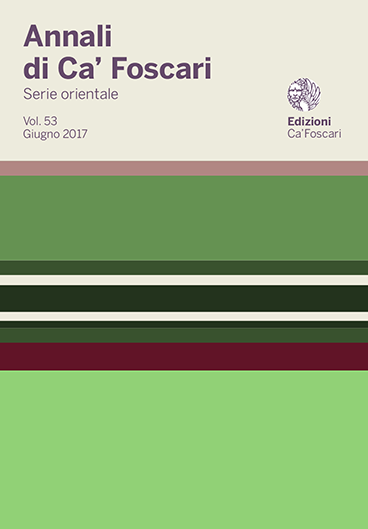
- search 311 views
- file_download 13 download
- keyboard_capslock metadata
-
mark_email_readIscriviti alla newsletter
Rājasthānī Features in Medieval Braj Prose Texts
The Case of Differential Object Marking and Verbal Agreement in Perfective Clauses
abstract
One of the few scholars who paid attention to the ‘dark’ period of the evolution of NIA from late MIA was Luigi Pio Tessitori. The studies of this scholar resulted in his well-known Grammar of the Old Western Rajasthani. In the introduction of his Grammar, Tessitori advanced the hypothesis that probably in this first period of NIA there was an intermediate form of speech that surely separated Old Western Rājasthānī from what he called an Old form of Western Hindī, but in which these two linguistic varieties of Western NIA merged together. Tessitori called Old Eastern Rājasthānī this old intermediate form of speech. As stated by himself, one of Tessitori’s future objectives would be to find some proof to demonstrate or to invalidate this hypothesis. However, due to his untimely death, he was not able to do this. Due to the fact that at the present there’s lack of specific studies on this topic, the present study intend to pursue Tessitori’s hypothesis using some medieval published texts in Braj-bhāṣā prose. Even if the language of this kind of texts could be classified as a form of Braj, we will see that these texts show a language different from classical Braj, where many examples of a typical characteristic of Māravāṛī (i.e. Rājasthānī) are attested: the agreement of O with main verb, in a perfective construction, even if O presents an overt marking with the DAT/ACC postposition. Therefore these texts show the existence of a feature of convergence between different varieties. In the last section I will conclude that this seems to be in agreement with Tessitori’s hypothesis, but a more detailed study on language contact involved in the evolution and formation of Western Hindī dialects is necessary to validate this hypothesis.
Keywords: Ergativity • Differential Object Marking • Rājasthānī • Braj-bhāṣā



